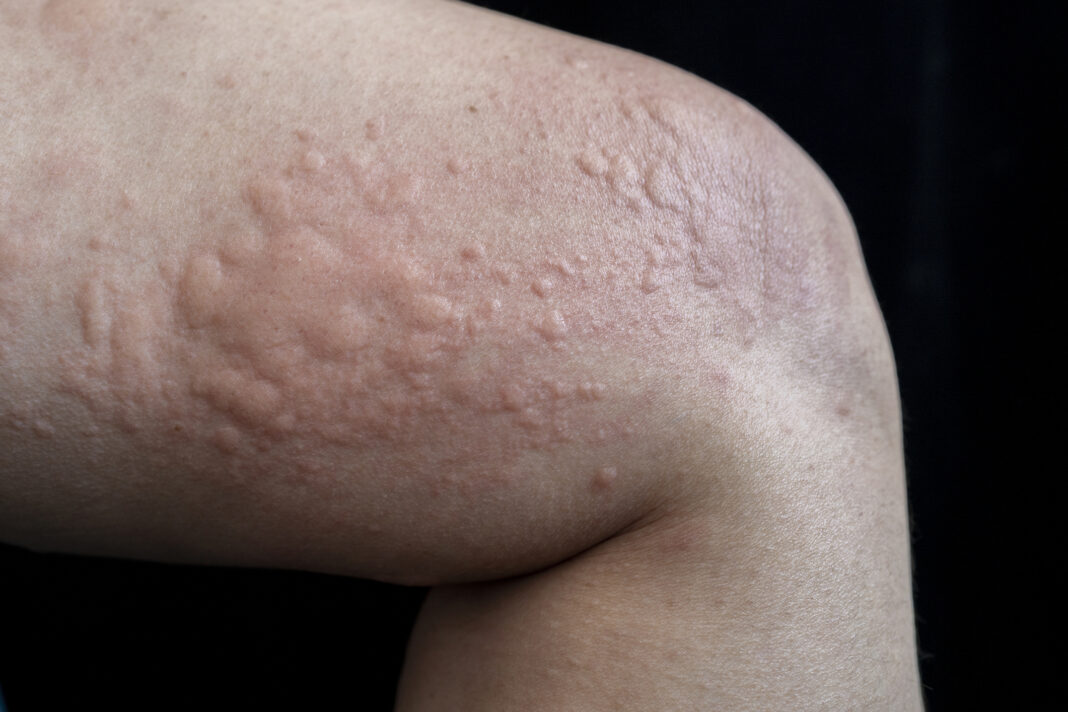Hives, also known as urticaria, are a common skin condition characterized by itchy, raised bumps or welts on the skin. They are typically caused by an allergic reaction, although the exact triggers can vary from person to person. This article aims to provide an overview of hives, including their symptoms, causes, diagnosis, and common treatment options.
Symptoms:
The primary symptom of hives is the presence of raised, itchy rashes on the skin. These rashes can vary in size and shape and may appear as red or pink welts. They can be localized to a specific area or spread across different parts of the body. In some cases, hives may also be accompanied by swelling, known as angioedema, particularly in the lips, eyelids, or throat.
Causes:
Hives occur as a result of an allergic reaction in the body. However, identifying the exact cause of allergies can be challenging as they can be triggered by a wide range of factors. Common allergens include certain foods (e.g., nuts, shellfish, eggs), medications (e.g., antibiotics, nonsteroidal anti-inflammatory drugs), insect bites or stings, pollen, animal dander, and latex. Additionally, other factors such as stress, temperature changes, and infections may also contribute to the development of hives.
Diagnosis:
Diagnosing hives typically involves a thorough medical history review and a physical examination by a healthcare professional. The doctor will inquire about the symptoms, their duration, and potential triggers or allergens. In some cases, further diagnostic tests such as blood tests or skin allergy tests may be recommended to identify the specific allergens causing the hives.
Common Treatment Options:
Antihistamines:
These medications help reduce the symptoms of hives by blocking the effects of histamine, a chemical released during an allergic reaction. Commonly used antihistamines include loratadine, fexofenadine, cetirizine, and desloratadine.
Corticosteroids:
In more severe cases or when antihistamines alone are not effective, corticosteroids may be prescribed. These medications work by reducing inflammation and relieving itching. Prednisone is a commonly prescribed corticosteroid for hives.
Histamine (H-2) blockers:
If antihistamines and corticosteroids do not provide sufficient relief, H-2 blockers such as cimetidine, ranitidine, or famotidine may be recommended.
Monoclonal antibodies:
In difficult-to-treat cases of chronic hives, monoclonal antibodies like omalizumab may be prescribed. These medications target specific molecules involved in the allergic response.
Leukotriene receptor antagonists:
These drugs, such as montelukast, can be used to prevent the release of histamines from mast cells and help alleviate hives. It is important to consult with a medical professional for an accurate diagnosis and appropriate treatment plan tailored to individual needs.
Hives are a common allergic skin condition characterized by itchy, raised rashes on the skin. Although the exact cause of allergies leading to hives is often unknown, various triggers can contribute to their development. Seeking medical attention is crucial for the proper diagnosis and management of hives. Treatment options, including antihistamines, corticosteroids, H-2 blockers, monoclonal antibodies, and leukotriene receptor antagonists, can help relieve symptoms and improve the quality of life for individuals affected by hives.

